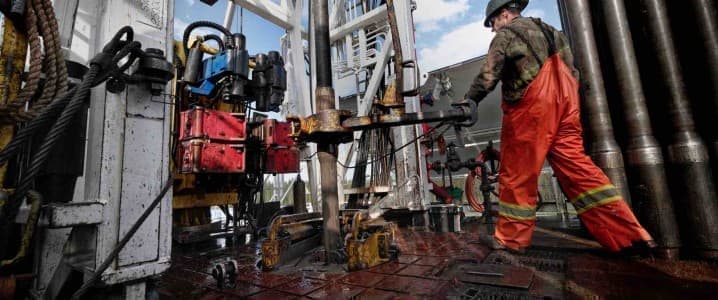Remote work was one of the changes bestowed upon us by the pandemic—and it may turn into a long-term trend. This trend was most visible in office jobs, but it was by no means limited to them. Oil drillers went remote, too. And they plan to stay remote.
The words “remote drilling” probably conjures up an image of a lonely offshore platform or a field in the Texas shale plays with no crew to man the equipment because everything is done from a command center hundreds of miles away.
Yet remote drilling is much more than that.
The activities grouped under the term remote drilling are a whole spectrum, Shan Jegatheeswaran, vice president of digital for Oilfield Services at Baker Hughes, told Oilprice this week. It is not only about remote control, either. Remote drilling spans activities as diverse as drilling, logistics, data processing and sharing, and a better operational organization overall.
Baker Hughes recently announced what it calls the largest deployment of its remote operations digital technology, and this deployment involved all of Aramco’s drilling operations. This is how the company describes what the project entails: “a single solution that covers data aggregation from the edge; real-time, unified data streaming and visualization; data management; software development services; rig-site digital engineers; and monitoring personnel.”
In other words, what we may call remote drilling in a conversation actually involves a comprehensive push to unify and centralize operations in the upstream industry. Baker Hughes has been doing it for 20 years already, and its peers are doing it, too. According to Jegatheeswaran, this is the future of the upstream. Because it’s beneficial for everyone involved.
To begin with, reducing the number of personnel needed on site means reducing costs associated with personnel, the potential for safety issues, and not least, emissions. According to Baker Hughes, for every engineer the company remotes from an offshore platform, it saves travel- and accommodation-related emissions to the tune of 6 tons of carbon dioxide equivalent annually.
The emission-reduction side of the remote drilling trend is one of its major benefits, without a doubt. It is also among the benefits of remote drilling that the pandemic made a lot more visible than before. As Schlumberger put it in an article on remote drilling for Offshore magazine, before the pandemic, remote drilling was something that was nice to have. The pandemic turned this technology into a critical element that could ensure operational continuity.
The stats speak for themselves. Baker Hughes says the share of remote operations in its drilling services increased from 50 percent in 2019 to 87 percent in 2020. For many of its clients, no remote drilling meant no drilling at all during the lockdowns. So, even if some might have been unwilling to embrace the new era of remote drilling, they now had to—or risk their business.
Yet remote drilling is not only a way to cut costs by sending fewer people to the field and reducing emissions. It also reduces risks all along the supply chain of the upstream industry by effectively shortening it. The fewer risks there are in an operation, regardless of their nature, the better for everyone.
Operational efficiency is another clear advantage of the spectrum of remote drilling. It makes data collection and processing much more productive by centralizing these processes at a single point, Baker Hughes’ Jegatheeswaran explains. Yet to step away from the digital into the physical field for a moment, remote drilling also speeds up the start of new projects, and this is becoming increasingly important in the post-pandemic industry where budgets will continue to be allocated carefully for the observable future.
There are challenges, of course. Finding and training the right talent is one of them, according to Jegatheeswaran. Yet, there is a silver lining in this particular problem: as companies find and train the new “remote” employees, they can then transfer these skills to another field should they decide to change careers.
Another challenge is deriving the maximum value from the technology because it’s all about value these days in oil and gas as the era of lavish spending on everything because Brent trades at $100 are over. Now, even if Brent does go up to $100, oil companies—even the biggest and richest—will think twice before splashing on extravagant projects with long ROI periods.
ADVERTISEMENT
Remote drilling—and data visualization and monitoring, and maintenance—is the future of oil and gas; that much is clear. It will be quite a while before fields are fully automated, and this is good news for the people working in the industry. More people will be needed to ensure the long-term sustainability of remote field operations, and that’s good news for the next generations joining the workforce. Because remote drilling is a long-term endeavor.
As Baker Hughes’ Jegatheeswaran put it, once the oilfield services operator deploys the remote operations system, someone needs to monitor and maintain it. It’s not like selling a car and letting the customer deal with whatever happens to it afterward. It’s more of a long-term partnership of equals, beneficial both for the participants in it and everyone else, with the possible exception of those who want to keep oil and gas in the ground.
By Irina Slav for Oilprice.com
More Top Reads From Oilprice.com:
- Oil Could Reach $80 This Summer, But There’s A Catch
- Russia Expands Its Influence In Major Iraqi Oil Fields
- China’s Oil Imports To Drop After Refinery Margins Near $0


















